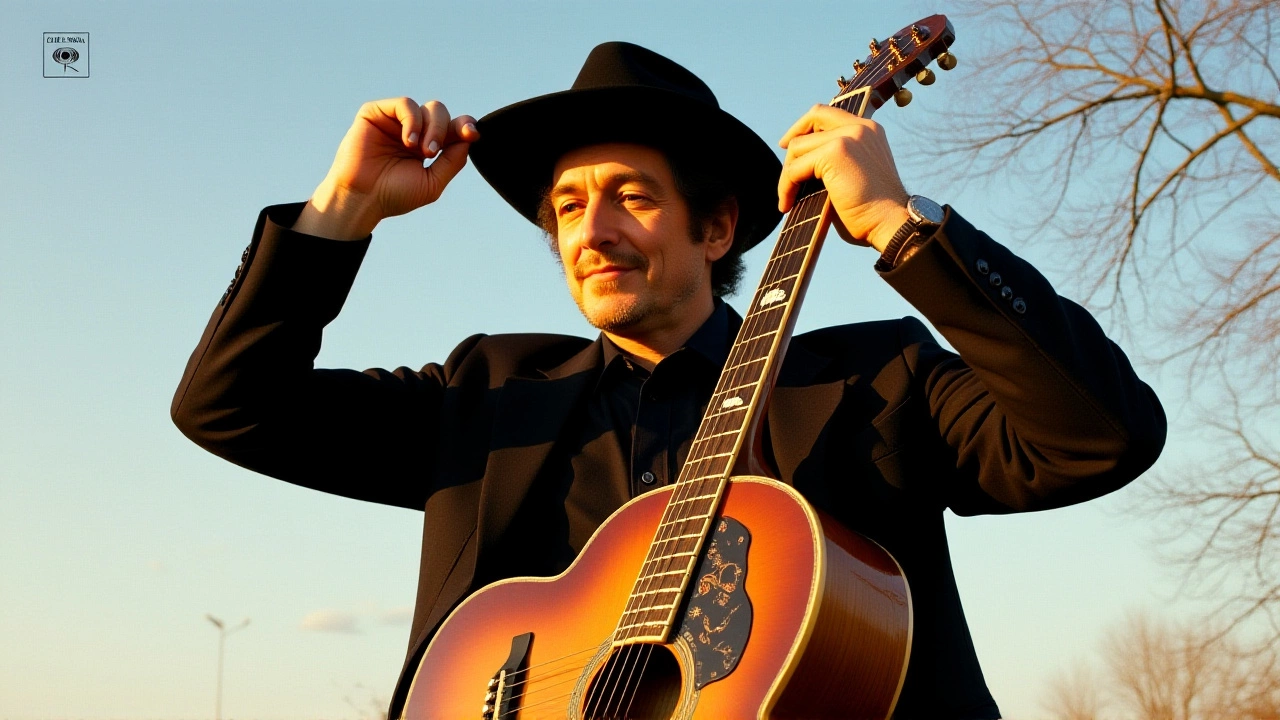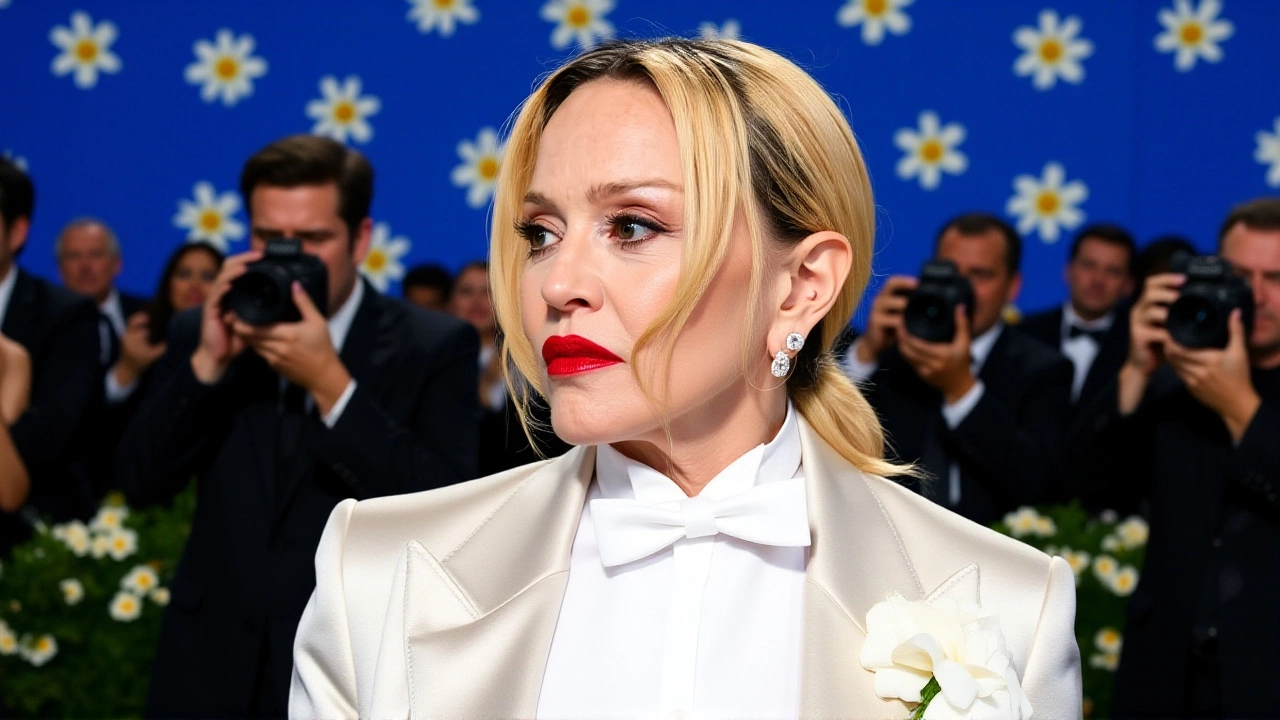Madonna Reveals Bob Dylan's 'Lay Lady Lay' Made Her Cry Through Adolescence
 Nov, 21 2025
Nov, 21 2025
It wasn't a sad song. But for a grieving teenage girl in a Michigan basement, Lay Lady Lay was everything. In a 1994 interview with journalist Paul Du Noyer, pop icon Madonna — born Madonna Louise Ciccone — confessed that Bob Dylan’s 1969 ballad made her cry every single time she heard it. The confession, recently resurfaced in a Parade.com piece by Jacqueline Burt Cote, paints a startlingly intimate portrait of a future superstar finding solace in a quiet, country-tinged love song during one of the most turbulent periods of her life.
The Basement Where the Music Mattered
Madonna was 13 when her mother, Madonna Louise Ciccone (née Fortin), died of breast cancer in 1963. By the early 1970s, she was living in Rochester Hills, Michigan, with her father and siblings. In her brother’s basement bedroom, she’d lie on the bed, headphones on, and play 'Lay Lady Lay' on repeat. "I’d lie on the bed and play that song and cry all the time," she told Du Noyer. "I was going through adolescence, I had hormones raging through my body. Don’t ask me why I was crying — it’s not a sad song." That’s the twist, isn’t it? The song isn’t mournful. It’s warm. Gentle. A whispered invitation: lay lady lay, lay across my big brass bed. Yet for Madonna, it carried the weight of loss, confusion, and the raw, unspoken ache of growing up without a mother. The pedal steel guitar, played by Charlie McCoy, didn’t just glide — it wept. And she wept with it.Dylan’s Secret Song for Streisand
Meanwhile, the man who wrote it, Bob Dylan — born Robert Allen Zimmerman in Duluth, Minnesota — had a different story. In interviews over the years, Dylan admitted he wrote Lay Lady Lay with Barbra Streisand in mind. He wanted her voice, her drama, her power. He even sent her flowers with a handwritten note asking her to sing a duet with him. She never responded. Fast forward to 2025, when NBC News reached out to Streisand about the revelation. Her reply? "I’m very flattered to find out Bob Dylan wrote 'Lay Lady Lay' for me. What I remember is getting flowers from him with a handwritten note asking me to sing a duet with him... but I just couldn’t imagine it then. Guess what, Bob, I can imagine doing it now!" No date was given for the original note. No confirmation of a duet yet. But the door, once closed, is now cracked open.
A Quiet Mutual Admiration
The irony? Dylan, the folk poet who once called pop entertainment "meaningless," had a soft spot for Madonna. In a 1991 interview with American Songwriter, he said: "Pop entertainment means nothing to me — but Madonna’s good." Just three words. But coming from him? That’s a monument. Madonna, who’s sold over 300 million records worldwide as of 2023, never tried to cover Lay Lady Lay. She didn’t need to. The song lived inside her — a private cathedral of emotion. She didn’t perform it on stage. She didn’t sample it in a track. She just listened. And cried. Again and again.Why This Matters Now
In an age of algorithm-driven nostalgia, where every emotional moment is packaged as a TikTok trend, Madonna’s raw, unfiltered confession feels almost radical. She didn’t cry because the lyrics were tragic. She cried because music — real, unpolished, human music — gave her a voice when she had none. It’s also a reminder that icons aren’t born fully formed. Madonna, the queen of reinvention, was once a lonely girl in a basement, clinging to a song that made no sense to the world but made perfect sense to her soul. And Dylan? He never knew. Not then. Maybe not even now. But the song — that quiet, aching, pedal steel-laced whisper — connected them anyway. Across genres. Across decades. Across silence.
What’s Next?
Streisand’s open invitation to Dylan remains just that — an invitation. No studio sessions have been announced. No press releases issued. But if the two ever did record together, it wouldn’t just be a duet. It would be a full-circle moment: a song written for one legend, wept over by another, and now possibly sung by both. For now, the music remains. And so does the tears.Frequently Asked Questions
Why did Madonna cry over a song that isn’t sad?
Madonna’s emotional response wasn’t about the lyrics — it was about timing. She was a grieving 13-year-old who lost her mother at age five, and by her teens, hormonal changes and unresolved grief created a deep sensitivity to music’s emotional texture. The warmth and intimacy of Dylan’s voice, paired with the song’s gentle rhythm, triggered an emotional release she couldn’t explain — not because it was sad, but because it felt safe.
Did Bob Dylan know Madonna loved his song?
There’s no evidence Dylan ever knew Madonna was moved by 'Lay Lady Lay' until interviews resurfaced decades later. He praised her as 'good' in 1991, but never connected that admiration to this specific song. Their relationship was one of silent mutual respect, not direct communication.
What role did Rochester Hills play in Madonna’s connection to the song?
Rochester Hills, Michigan, was where Madonna spent her formative years after her mother’s death. The basement bedroom, a quiet, dimly lit space away from the rest of the house, became her sanctuary. With no one else around, she could cry without shame. That room, that song, and that moment became foundational to her identity as an artist who would later turn pain into performance.
Is there any chance Barbra Streisand and Bob Dylan will record a duet now?
Streisand has expressed openness to collaborating with Dylan, but no formal plans have been announced. Dylan, now 83, has largely retreated from public projects. Still, the symbolic weight of them singing 'Lay Lady Lay' — the song he wrote for her, that Madonna wept to — would be profound. Fans are watching closely, but for now, it remains a beautiful, unfulfilled possibility.
How did 'Lay Lady Lay' perform commercially when it was released?
Released in April 1969 on Dylan’s Nashville Skyline album, 'Lay Lady Lay' peaked at No. 16 on the Billboard Hot 100 in August 1969 — a rare mainstream hit for Dylan at the time. Its success helped bridge his folk roots with country-pop audiences. Charlie McCoy’s pedal steel guitar became iconic, and the track remains one of Dylan’s most covered songs, though none have matched the emotional resonance it held for Madonna in that Michigan basement.